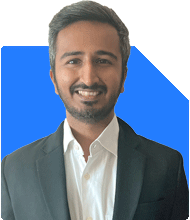Sir, which are the best mutual fund to invest now in lumpsum for 2 years?
Ans: Investing in mutual funds for a short-term period of 2 years requires a careful approach. While mutual funds can offer good returns, the short-term horizon calls for a more conservative strategy. Here’s a breakdown of the best types of funds to consider for a 2-year lumpsum investment:
Consider Low-Risk Options
For a 2-year period, capital preservation is key. Opt for debt-oriented funds or hybrid funds. Equity exposure is risky due to potential market volatility.
Debt funds are relatively safer for such a short horizon. These include ultra-short duration funds, short-term debt funds, or banking and PSU funds. These funds invest in government securities, corporate bonds, and other fixed-income instruments that have low credit risk and provide stable returns.
Hybrid funds are another good option if you’re willing to take a little more risk. These funds invest in a mix of equity and debt, providing some equity exposure for higher returns while keeping risk in check with debt instruments.
Keep in mind that equity-based funds should be avoided for such short-term goals as they tend to have higher volatility. The risk of losing capital in a two-year period is significant, and market corrections can adversely affect your investment.
Be Mindful of Liquidity
Liquidity is important in short-term investments. Choose funds that offer quick redemption without high exit loads. Debt funds generally have better liquidity than long-term equity funds.
If you’re sure that you won’t need the funds for two years, consider ultra-short duration funds or short-term bond funds with high liquidity and minimal lock-in periods.
Analyse Tax Efficiency
Mutual fund investments are taxed based on the type of fund and the holding period. For a two-year investment horizon, taxation can have a considerable impact on your overall returns.
Equity mutual funds: For a holding period of less than one year, short-term capital gains (STCG) are taxed at 20%. If held for over one year but under two years, long-term capital gains (LTCG) above Rs. 1.25 lakh are taxed at 12.5%.
Debt mutual funds: For holding periods less than three years, short-term capital gains are taxed as per your income tax slab. Therefore, for debt funds, your gains will be added to your taxable income and taxed accordingly.
Invest in tax-efficient instruments like debt funds for lower tax impact over this period.
Regular Funds vs. Direct Funds
When investing through a mutual fund distributor (MFD) with a Certified Financial Planner (CFP) credential, you get professional advice that helps you choose the right funds. This guidance can ensure better fund selection, suited to your goals.
Direct funds may have lower expense ratios but require a deep understanding of market dynamics and fund performance. Without proper guidance, the risks associated with direct fund investments could outweigh the potential cost savings.
For long-term success, it’s better to invest in regular funds through a trusted MFD.
Market Conditions and Flexibility
The current market conditions should also guide your decision. Since the market can fluctuate, opting for conservative funds helps shield your capital from sudden downturns. However, if you’re willing to take on slightly more risk, hybrid funds could offer better returns without overexposing your investment to the market's volatility.
Keep Your Financial Goals in Mind
It’s important to assess your financial goals before making any lumpsum investment. Since your investment horizon is only 2 years, the primary focus should be on protecting your capital and earning modest returns.
Avoid Index Funds
Index funds track a specific index and do not actively manage the investment to mitigate risks or adjust to market conditions. This means that they may not be the best choice for a short-term investment of 2 years. Actively managed funds, such as debt and hybrid funds, offer better control over risks and can provide more stable returns within this time frame.
Risk Assessment
Debt funds and hybrid funds come with relatively low risks compared to equity funds. However, it’s important to note that even these carry some level of interest rate risk and credit risk. Choosing funds with high-quality bonds and low credit risk is crucial for safeguarding your investment over two years.
If you have a low-risk appetite, sticking to ultra-short duration or short-term debt funds is advisable. These funds typically invest in securities with shorter maturity periods, making them less sensitive to interest rate fluctuations and providing better capital protection.
For those with moderate risk tolerance, hybrid funds can provide slightly higher returns while still keeping your capital relatively safe. These funds balance equity and debt exposure, allowing for some capital appreciation while limiting volatility.
Final Insights
For your 2-year investment horizon, opt for debt or hybrid funds. These funds focus on capital preservation and provide reasonable returns with lower risk compared to equity-focused funds.
Short-term investments require a cautious approach, and selecting funds with high liquidity and low risk will help you achieve your financial goals within this timeframe. Be mindful of taxation on mutual fund gains and always seek guidance from a Certified Financial Planner to make informed decisions.
Best Regards,
K. Ramalingam, MBA, CFP,
Chief Financial Planner,
www.holisticinvestment.in
https://www.youtube.com/@HolisticInvestment

























